When the bus enters the east side of a tiny town, the driver slows down to a crawl. On the right, he points out through a cluster of tourists, a large granite mausoleum in a park-like setting. The name of the town is Jim Thorpe Pennsylvania.
A native American and descendant of Chief Black Hawk, Jim Thorpe was born in the Oklahoma territory in 1888. He was voted one of the greatest athletes of the twentieth century AND back in 1950, he was voted THE greatest athlete of the first half-century. Thorpe's rise to prominence was due to his spectacular performance in the pentathlon and decathlon during the 1912 Olympics in Stockholm Sweden. When King Gustav met Thorpe he said, "Sir, you are the greatest athlete in the world." To which Thorpe responded, "Thanks, King."
 A ticker-tape parade in New York City welcomed him back to the states and from it, superstar Thorpe became a celebrity. That is until a newspaper reporter uncovered that Thorpe, prior to the Olympics had played baseball in North Carolina for sixty dollars a month. This legitimate technicality had cost Thorpe his amateur status. Although he claimed ignorance of the law, he was stripped of his gold medals and his name was taken out of the record books. Thorpe was disgraced and never recovered.
A ticker-tape parade in New York City welcomed him back to the states and from it, superstar Thorpe became a celebrity. That is until a newspaper reporter uncovered that Thorpe, prior to the Olympics had played baseball in North Carolina for sixty dollars a month. This legitimate technicality had cost Thorpe his amateur status. Although he claimed ignorance of the law, he was stripped of his gold medals and his name was taken out of the record books. Thorpe was disgraced and never recovered.
On a low level, Thorpe managed to stay in the limelight. Among other things, he played major league baseball with the New York Giants. But as the years went by, his depression led to alcoholism and a decline in health. His situation worsened because he gave "his people" a lot of his money and was in many cases exploited.
He and his wife Patricia were so poor by 1951 that when he developed cancer, a Philadelphia hospital took him on as a charity case. Jim Thorpe was sixty-five when he died in 1953. Then, Jim's native state of Oklahoma refused to assist Mrs. Thorpe in erecting a suitable memorial in his honor.
So why is Thorpe buried in Northeast Pennsylvania and why does the whole town bear his name? Jim's only connection to Pennsylvania came when attended the Carlisle Indian Academy near Harrisburg. But that was a hundred miles away and there's no proof that he ever visited coal country or had any links to it.
The story starts in a tiny settlement called Coalville. When the depth of the anthracite coal bonanza was realized, entrepreneurs rushed into the area. By 1818, the town became so large that it became two separate municipalities and changed its name Mauch Chunk (Bear Mountain) and East Mauch Chunk.
Mauch Chunk became a vital coal distribution point as the Lehigh River was used to ship the coal out. When the railroad came in, production skyrocketed and the region boomed. In and around the 1840's, despite the danger and disproportionally low pay, poor Irish immigrants were attracted to the area and became miners. The area's Protestant coal and railroad tycoons treated the miners with as much dignity as they would a pick-ax. The working conditions were deplorable. Deaths and injuries from cave-ins, and other mishaps plus lung disease were rampant.
To fight these conditions, an underground terrorist network called the Molly Maguires was formed. A movie, based on truth, by that name from 1970 starred Sean Connery and Richard Harris. The film depicts Connery as a Molly Maguire leader while Harris is a Pinkerton Detective hired by the tycoons to infiltrate the organization and destroy it.
An interesting piece of negative American history, scenes from this 2 1/2 star movie was filmed on location in Jim Thorpe.
In the 1930's, the great depression hit Mauch Chunk and East Mauch Chunk hard. Jobs became scarce and a good deal of its population left. However, when the rest of the nation bounced back, they didn't.
When Jim Thorpe died in 1953, the town learned of Mrs. Thorpe's plight. So, in an attempt to reverse the town's continuous downward spiral, they approached her with the idea of memorializing him and naming the town after him.
Spear-headed by the memorial, today Jim Thorpe and its 4,800 permanent residents are a revitalized community. Rafting the Lehigh River and other nearby outdoor activities attract many tourists. There are also museums as well as tours of the mines and canals. Additionally, cultural events and street fairs take place in the town's Victorian business district. Beautifully juxtaposed against the mountains; galleries, restaurants and Bed & Breakfasts make Jim Thorpe great family fun or as a romantic getaway.
He and his wife Patricia were so poor by 1951 that when he developed cancer, a Philadelphia hospital took him on as a charity case. Jim Thorpe was sixty-five when he died in 1953. Then, Jim's native state of Oklahoma refused to assist Mrs. Thorpe in erecting a suitable memorial in his honor.
So why is Thorpe buried in Northeast Pennsylvania and why does the whole town bear his name? Jim's only connection to Pennsylvania came when attended the Carlisle Indian Academy near Harrisburg. But that was a hundred miles away and there's no proof that he ever visited coal country or had any links to it.
The story starts in a tiny settlement called Coalville. When the depth of the anthracite coal bonanza was realized, entrepreneurs rushed into the area. By 1818, the town became so large that it became two separate municipalities and changed its name Mauch Chunk (Bear Mountain) and East Mauch Chunk.
Mauch Chunk became a vital coal distribution point as the Lehigh River was used to ship the coal out. When the railroad came in, production skyrocketed and the region boomed. In and around the 1840's, despite the danger and disproportionally low pay, poor Irish immigrants were attracted to the area and became miners. The area's Protestant coal and railroad tycoons treated the miners with as much dignity as they would a pick-ax. The working conditions were deplorable. Deaths and injuries from cave-ins, and other mishaps plus lung disease were rampant.
To fight these conditions, an underground terrorist network called the Molly Maguires was formed. A movie, based on truth, by that name from 1970 starred Sean Connery and Richard Harris. The film depicts Connery as a Molly Maguire leader while Harris is a Pinkerton Detective hired by the tycoons to infiltrate the organization and destroy it.
An interesting piece of negative American history, scenes from this 2 1/2 star movie was filmed on location in Jim Thorpe.
In the 1930's, the great depression hit Mauch Chunk and East Mauch Chunk hard. Jobs became scarce and a good deal of its population left. However, when the rest of the nation bounced back, they didn't.
When Jim Thorpe died in 1953, the town learned of Mrs. Thorpe's plight. So, in an attempt to reverse the town's continuous downward spiral, they approached her with the idea of memorializing him and naming the town after him.
Spear-headed by the memorial, today Jim Thorpe and its 4,800 permanent residents are a revitalized community. Rafting the Lehigh River and other nearby outdoor activities attract many tourists. There are also museums as well as tours of the mines and canals. Additionally, cultural events and street fairs take place in the town's Victorian business district. Beautifully juxtaposed against the mountains; galleries, restaurants and Bed & Breakfasts make Jim Thorpe great family fun or as a romantic getaway.



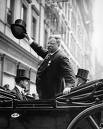





































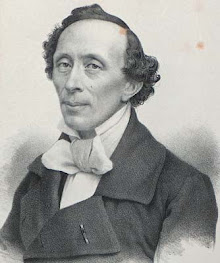


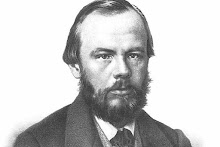



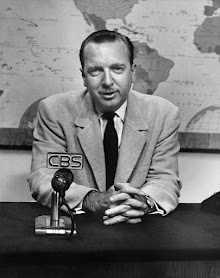

































































































































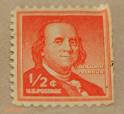



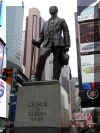





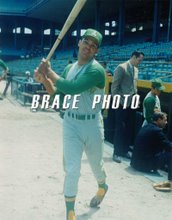




No comments:
Post a Comment